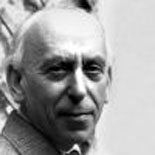
Léon Zack was a Russian émigré who became a leading exponent of the Abstraction Lyrique movement, which was the European equivalent to Abstract Expressionism in America. A painter, sculptor, illustrator and creator of tapestries and mosaics, Léon Zack left a body of work which spans the twentieth-century. From his early, Impressionist-influenced painting to late lyrical abstraction, all his work displays a particularly Russian sensitivity which is almost mystical in tone.
Born in Nizhni-Novgorod (Gorki), Russia, the son of a pharmacist, Zack took drawing lessons from a young age, having decided at the age of six to become a painter. He studied painting at various private schools and in 1907 was exposed for the first time to the painters of the Salon de la Federation in Moscow. At the home of the noted collector Serguei Chtchoukine he came across the Impressionists, Cezanne and Matisse – painters who undoubtedly cast influence over his early work and his subsequent decision to move to France. Whilst studying literature at Moscow University he came under the influence of Jakimchenko, who reinforced this interest in contemporary French painting. He then worked in the studios of Rerberg and Machkoff (the latter, of the ‘Jack of Diamonds’ group). Marrying in 1917, he left Russia for Rome and Florence, where he lived until 1921. In 1922 he went to Berlin to take up a commission designing the stage scenery for the Boris Romanoff’s Russian Romantic Ballet. The following year he moved to Paris, which he would make his permanent home, with the exception of the war years 1940-45 (during which he lived in Villefranche-sur-Mer, near Grenoble in an alpine village under an assumed identity),
In Paris Zack exhibited at the Salon des Indépendants, the Salon d’Automne and the Salon des Surindépendants. In 1926 he had his first solo exhibition at the Galerie d’Art Contemporain. The following year saw a one-man show at the Galerie Percier, and in 1935 at the Galerie Wildenstein. From 1930-37 he produced work that came to be associated with the ‘neo-Humanist’ group of painters (most notably Hosiasson, Eugene Berman, Christian Berard and Pavel Tchelitchev). After 1938 his painting, whilst figurative, became increasingly expressionistic. Returning to Paris in 1945, Zack continued to exhibit widely – including a solo show at the Galerie Granoff in 1946 – and after 1947 his work turned to lyrical abstraction. Finding that subject matter was playing no useful role in his painting, Zack eliminated it to concentrate on abstract expression; the celestial colours, and nebulous forms convey a sensuous, evocative mystical quality, suggestive of an enigmatic universal profundity.
Zack became an established exponent of the Abstraction Lyrique movement in Europe and held regular solo shows at Galerie Jacques Massol in Paris and throughout Europe in London (at Waddington Galleries), Basel, Brussels, Cologne, Copenhagen, Dublin, London, Oslo and the Venice Biennale in 1964.
The artist’s work is now represented in numerous museums of Modern Art worldwide including the Musée National d’Art Moderne, Paris; the Tate Modern, London; the Philips Collection, Washington; and the museums of Brussels, Anvers, Luxembourg and the Vatican.